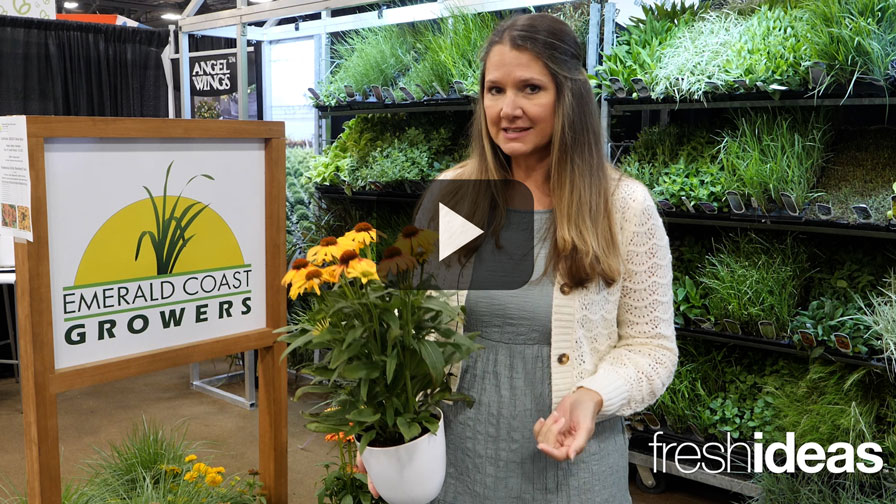Using The Plant Growth Regulator Calculator
Rounding out the GroCALC software package, PGRCALC is the third and final program that has been updated in the past few months. The calculator has been updated from a Microsoft Excel-based program to a Web-based application that does not require a user download.
If you are currently using PGRCALC, you know how this tool can give you confidence in your PGR applications. If you are not familiar with PGRCALC, you will soon realize how easy and quick it is to calculate the amounts of a PGR and water you need to mix for any application. PGRCALC will calculate the amount of an individual PGR product to add to a volume of water to obtain a desired concentration. In addition, it will also calculate the cost of the total application and cost per pot.
Getting Started
To use the new version of PGRCALC, point your Internet browser to www.nhfloriculture.com. You will be directed to the University of New Hampshire Cooperative Extension Greenhouse and Floriculture homepage. On the left-hand navigation bar, click on “Grower Tools.” This will take you to the GroCALC page, which gives you the choice of the three different calculators (AlkCALC, FertCALC, and PGRCALC). To save time in the future, bookmark this page to quickly access it next time. Clicking on the PGRCALC logo will start PGRCALC.
When you first open the PGRCALC page, you will notice there are input fields in the “Calculation Form.” Some of the input fields are in red and others are in blue. The red fields are required and the blue are optional.
Using your keyboard, type in your company’s name and your name. Using the dropdown menu, choose the PGR you wish to apply (most commercially available PGRs are listed) and then, depending on the PGR you choose, you may choose an application method. PGRCALC knows what application methods are allowed under each PGR’s label. For example, B-Nine can only be applied as a foliar spray, but Piccolo can be applied as a foliar spray or a substrate drench.
You will notice two different options for substrate drenches are available: “Drench ppm” or “Drench mg a.i.” When selecting a drench option, be mindful of the units you are using, which can be in either ppm or mg of active ingredient/pot (mg a.i.). In both cases, the volume of water added to each pot is very important in determining the exact PGR dose. The other input fields, “date,” “crop/cultivar,” “location” and “notes” are not needed but are useful if you are not the person doing the actual application – or if you file the results for future reference. After all your information is entered click on the “Submit” button.
You will be taken to a second page where you will finish the calculation. Under “Input Variables” you will be asked to enter in the desired concentration, application volume, number of pots or flats, square feet of bench area and average plant per pot diameter (for spray applications) or desired concentration, number of pots or flats, and drench volume for drench applications. Once this information is entered you can scroll down the page, and you will notice a table that specifies how much PGR you will need to add to a volume of water and the final spray solution volume will be listed. These volumes are listed in fluid ounces per gallon, milliliters per gallon, and milliliters per liter to accommodate the units that you choose to use. Farther down, the PGRCALC will calculate the ppm of the application and the mg a.i. applied to each pot regardless of the units chosen in the previous screen.
Convenient Greenhouse Resource
PGRCALC is a powerful decision-making tool and capable of calculating measurement volumes. In many cases, the desired result from a PGR application can be accomplished by different products or application methods. The decision of which product or method to use can depend on a number of things but is often based on the most economical product or method. PGRCALC can easily determine the cost of an application (labor not being included).
At the top of this same screen, you will notice there is an input box under the “Data Input” section next to “PGR Cost.” The default number for each PGR is the basic list price, but this may be different depending on your supplier and the quantities you purchase. Simply input your cost for the PGR in question and scroll down to “Cost Table.” This breaks down the cost of an application by “cost per pot” and “total cost of application.” You can simply run calculations on all of your product and/or application methods to determine which will be the most cost-effective option.
Most growers don’t have a computer with Internet access in the greenhouse where the PGR mixing will be done. Instead of writing all mixing instructions down, simply click on the “Print Report” button at the bottom of the screen, and a new window will appear with a printer-friendly version you can print (Figure 1). You can also file this in your records for future reference. If you prefer a paperless file system, simply click on the “Print PDF” button and you can save a PDF file on your computer.










